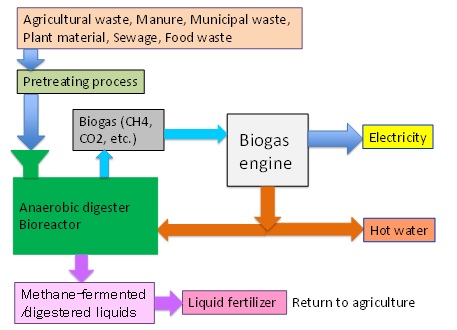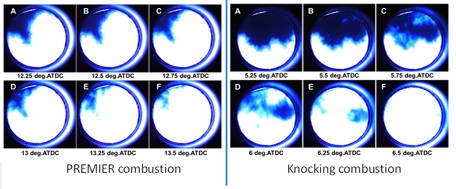Example
Higher Thermal Efficiency of Biogas Engine for Power Generation
Background and Objectives
Biogas can be produced from raw materials such as agricultural waste, manure, municipal waste, plant material, sewage, green waste or food waste. Biogas is a renewable energy source. Biogas consists of mainly methane and carbon dioxide. An engine makes power to generate electricity and exhausted heat is also utilized for making hot water, etc. The total efficiency reaches up to 85 % with this kind of co-generation system with using these waste materials.
Overview
It has been found that the end gas region is auto-ignited without pressure oscillation such as knock in higher load under supercharged and lean conditions in a gas engine, which phenomena was named as PREMIER combustion in my laboratory. The PREMIER combustion can achieve higher output and higher thermal efficiency. Now research has been done to reveal the combustion mechanism of this PREMIER combustion for practical application.
Expected effect
This study focuses on clarifying combustion mechanism in engine cylinder for the purpose of achieving higher thermal efficiency. This system will contribute to utilize the energy source for local production for local consumption.


Representative
